Cat palms and majesty palms are two of the most popular palm trees on the market. They are both beautiful, tropical plants that can add a touch of elegance to any home. But what are the differences between these two palms? And which one is right for you?
Differences Between Cat Palm and Majesty Palm
The Cat Palm (Chamaedorea cataractarum) and Majesty Palm (Ravenea rivularis) are two of the most popular palms used as houseplants. Both are relatively easy to care for and make beautiful additions to any home. But what are the differences between these two palms?
The Cat Palm grows to a maximum height of about 6 feet, while the Majesty Palm can reach up to 20 feet tall. The most obvious difference is in their size. The Cat Palm is also much more slender than the Majesty Palm, with narrower leaves.
The Cat Palm prefers bright, indirect light and moist, well-drained soil. The Majesty Palm, on the other hand, can tolerate lower light levels and is more tolerant of wet conditions. Another difference is in their preferred growing conditions.
Finally, the Cat Palm is more resistant to pests and diseases than the Majesty Palm. This makes the Cat Palm a better choice for those who want a low-maintenance plant.
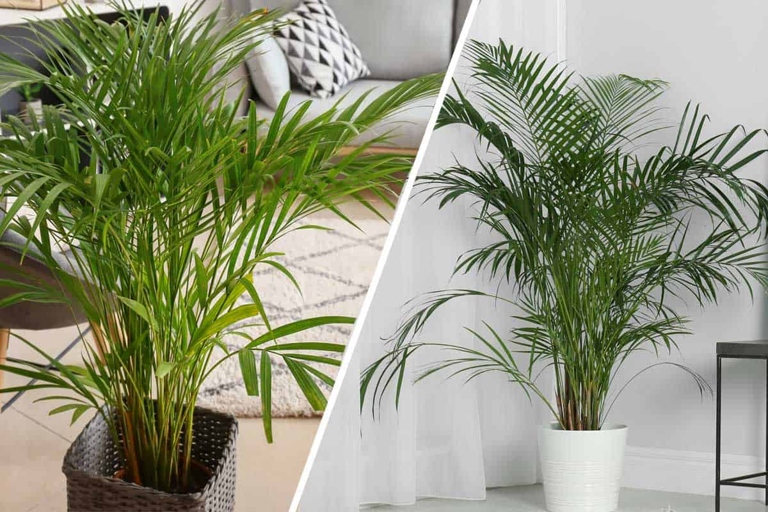
If you’re looking for a smaller palm that is easy to care for, the Cat Palm is a good choice. If you don’t mind a little extra work and you want a palm that can reach a towering height, the Majesty Palm is a better option. So, which palm is right for you?
Leaf Shape and Texture
Leaf shape and texture are two important characteristics to consider when choosing a palm for your home. The Cat Palm and Majesty Palm are both popular choices, but there are some important differences to keep in mind.
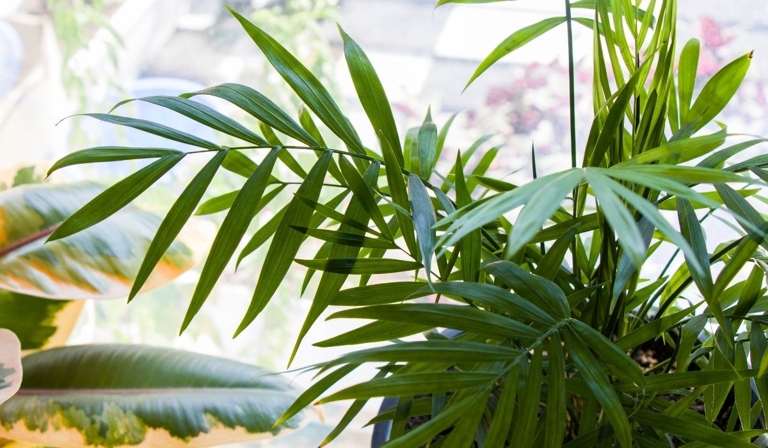
The Cat Palm has long, thin leaves that are slightly curved. They are a deep green color and have a smooth texture. The Majesty Palm has wider, more oval-shaped leaves. They are a lighter green color and have a more rough, textured surface.
They prefer bright, indirect light and should be watered when the soil is dry to the touch. However, the Cat Palm is more tolerant of lower light levels and can even tolerate some shade. When it comes to care, both palms are relatively low-maintenance.
So, which palm is right for you? Consider the leaf shape and texture that you prefer, as well as your light conditions and watering needs. With a little research, you can find the perfect palm to add a touch of tropical elegance to your home.
Leaf Size
Leaf size is one of the most noticeable differences between the Cat Palm and Majesty Palm. The Majesty Palm’s leaves, on the other hand, can grow up to 3 feet in length. The Cat Palm’s leaves are much smaller, only reaching about 2 feet in length.
The Cat Palm’s leaves are more narrow and pointy, while the Majesty Palm’s leaves are wider and more rounded. Another difference between these two types of palms is the shape of their leaves.
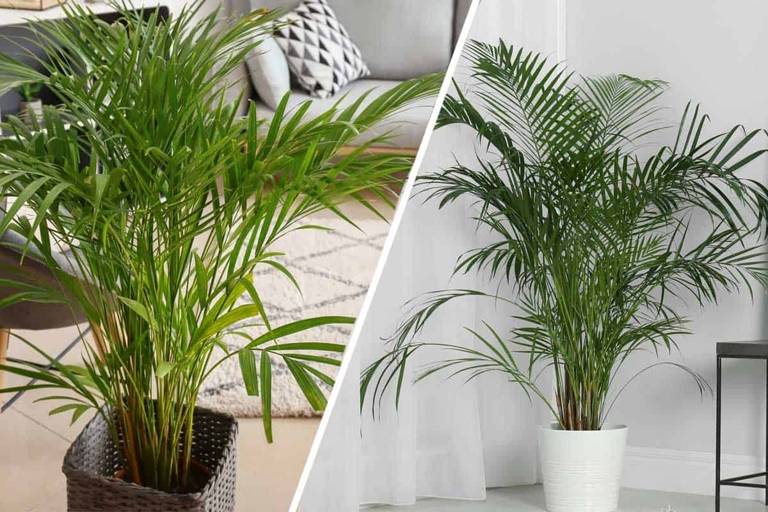
Finally, the Cat Palm’s leaves are a deep green color, while the Majesty Palm’s leaves are more of a light green color.
Growing Requirements
Cat palms (Chamaedorea cataractarum) and majesty palms (Ravenea rivularis) are both popular houseplants. They have similar growing requirements, but there are a few key differences to keep in mind.
They are also more tolerant of lower humidity levels than majesty palms. Cat palms prefer bright, indirect light and need to be watered regularly to prevent the leaves from browning.
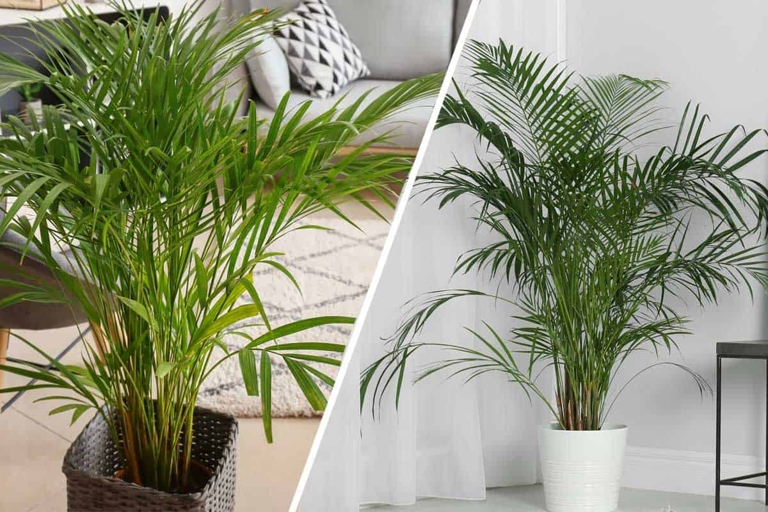
Majesty palms require more light than cat palms and prefer higher humidity levels. They are also more susceptible to root rot, so it’s important to water them carefully.
Both plants need well-draining soil and should be fertilized monthly during the growing season.
Soil pH
A pH less than 7 is acidic, and a pH greater than 7 is alkaline. The pH scale ranges from 0 to 14, with 7 being neutral. The pH of soil is a measure of its acidity or alkalinity.
Most plants prefer a slightly acidic soil with a pH of 6.0 to 6.5. The pH of soil affects the availability of nutrients to plants, as well as the activity of soil microorganisms.
However, they have some differences in their soil requirements. Cat palms (Chamaedorea cataractarum) and majesty palms (Ravenea rivularis) are both tropical plants that prefer a slightly acidic soil.
Cat palms are native to Mexico and prefer a soil pH of 6.0 to 6.5. They are not tolerant of salt and do not do well in soils with a high clay content.
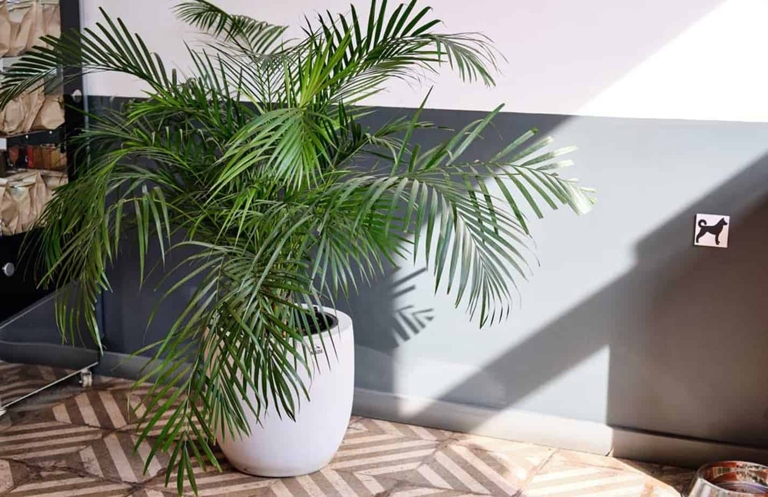
They are tolerant of salt and do well in both sandy and clay soils. Majesty palms are native to Madagascar and prefer a soil pH of 5.5 to 6.5.
Too much fluoride can damage their roots and leaves. Both cat palms and majesty palms are sensitive to fluoride, which can be found in some water sources and fertilizers.
Humidity
The Cat Palm (Chamaedorea cataractarum) and Majesty Palm (Ravenea rivularis) are two popular species of palm that are often used as houseplants. Both palms are native to tropical regions and prefer warm, humid climates.
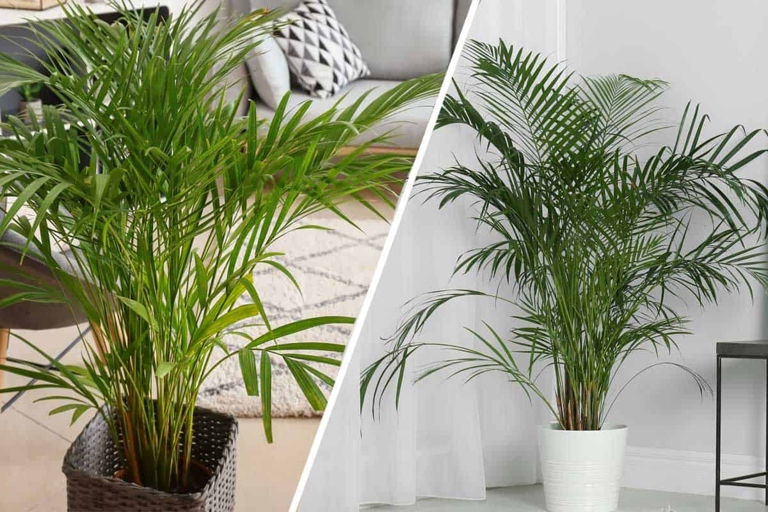
Cat palms produce small, yellow flowers that bloom in the spring. Cat palms are smaller than majesty palms, growing to a height of about 6-8 feet. The leaves are edged with sharp, black spines. They have slender, green leaves that are arranged in a feather-like pattern.
Majesty palms are larger than cat palms, growing to a height of 10-12 feet. Majesty palms produce large, white flowers that bloom in the summer. They have dark green, leathery leaves that are arranged in a spiral pattern.
Majesty palms are more tolerant of low light conditions than cat palms, making them a better choice for indoor growers. Both palms are relatively easy to care for, although they do require regular watering and misting to maintain high humidity levels.
Height and Structure
Both palms have a single trunk, but the Cat Palm’s trunk is much thinner and less robust than the Majesty Palm’s. The Majesty Palm’s leaves are also much larger than the Cat Palm’s, growing up to 3 feet wide. The Cat Palm’s leaves are typically only 1-2 feet wide. The Majesty Palm, on the other hand, can grow up to 20 feet tall. The Cat Palm is a smaller palm, typically only reaching a height of 6-10 feet.
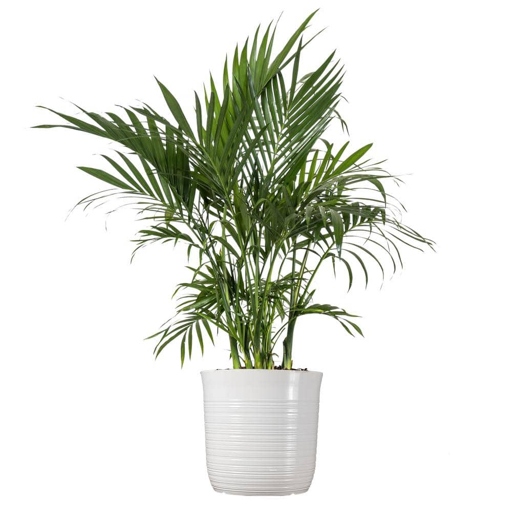
The Cat Palm is a great choice for smaller spaces, as it won’t take up too much room. The Majesty Palm is more susceptible to disease and pests, so it requires a bit more attention. The Majesty Palm is better suited for larger spaces, as it can provide a more substantial presence. Both palms are relatively low maintenance, but the Cat Palm is easier to care for.
Growing Requirements
The Cat Palm (Chamaedorea cataractarum) is a species of palm tree native to Mexico and Central America. It is a small palm, growing to a height of 6-8 m (20-26 ft). The Cat Palm is a popular houseplant and is often used in landscaping.
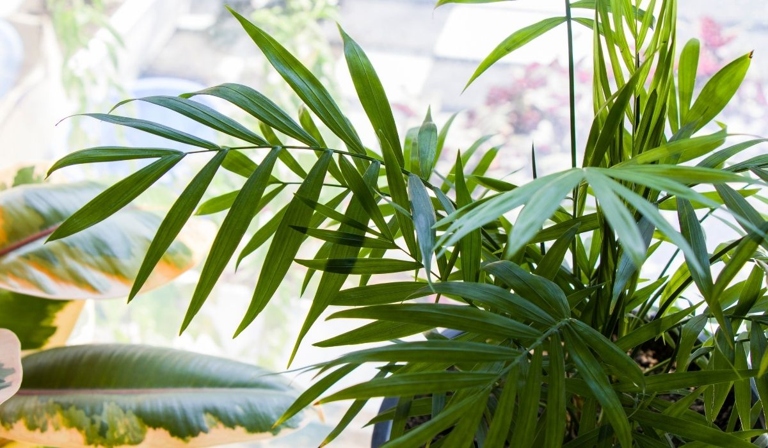
The Majesty Palm is a popular houseplant and is often used in landscaping. It is a large palm, growing to a height of 20-30 m (66-98 ft). The Majesty Palm (Ravenea rivularis) is a species of palm tree native to Madagascar.
The Cat Palm is a smaller palm, growing to a height of 6-8 m (20-26 ft), while the Majesty Palm is a larger palm, growing to a height of 20-30 m (66-98 ft). Both palms require well-drained soil and full sun to partial shade. Both the Cat Palm and the Majesty Palm are popular houseplants and are often used in landscaping.
Pests and diseases
Pests and diseases are one of the most common problems that houseplant owners face. There are a variety of pests and diseases that can affect your plants, and it can be difficult to know how to deal with them.
They can cause a great deal of damage to your plants, and they are very difficult to get rid of. If you have mealybugs, you will need to use an insecticide to get rid of them. Mealybugs are small, white insects that feed on the sap of plants. One of the most common pests is the mealybug.
If you have scale insects, you will need to use an insecticide to get rid of them. Scale insects are small, brown insects that feed on the sap of plants. Another common pest is the scale insect. They can also cause a great deal of damage to your plants, and they are also very difficult to get rid of.
There are a variety of diseases that can affect your plants. Root rot is caused by a variety of fungi, and it can kill your plants. If you have root rot, you will need to use a fungicide to get rid of it. One of the most common diseases is root rot.
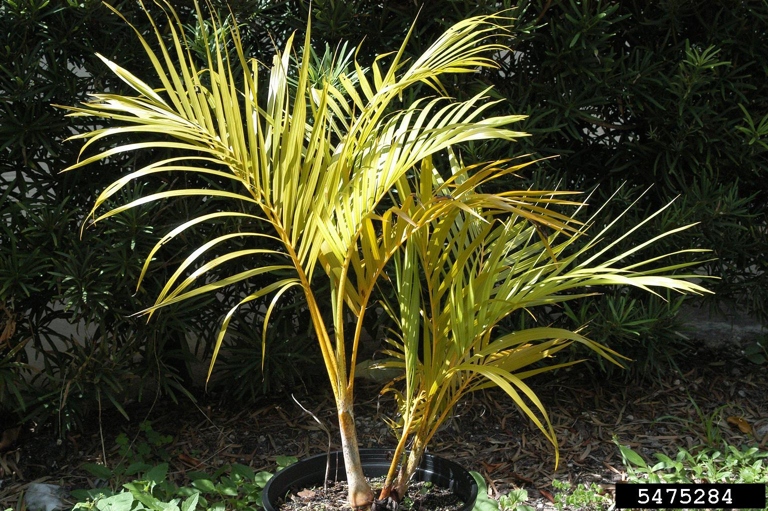
If you have powdery mildew, you will need to use a fungicide to get rid of it. Another common disease is powdery mildew. Powdery mildew is caused by a variety of fungi, and it can cause your plants to become covered in a white powder.
If you have pests or diseases, you will need to take action to get rid of them. You can find these products at your local nursery or garden center. There are a variety of products that you can use to get rid of pests and diseases.
Similarities Between Cat Palm and Majesty Palm
However, there are some differences between the two. The Cat Palm is also smaller, only reaching about 6 feet tall, while the Majesty Palm can grow up to 20 feet tall. They are also both slow growers. The Cat Palm has a single trunk, while the Majesty Palm has multiple trunks. There are a few similarities between the Cat Palm and Majesty Palm. The Cat Palm is also more tolerant of cooler temperatures and can even handle a light frost. Both are from the Arecaceae family and both have pinnate leaves.
Frequently Asked Questions
1. What is the difference between a cat palm and a majesty palm?
2. What are the similarities between a cat palm and a majesty palm?
3. How do I care for a cat palm?
4. How do I care for a majesty palm?
5. What are the benefits of having a cat palm?
6. What are the benefits of having a majesty palm?
7. Are there any dangers of having a cat palm?
8. Are there any dangers of having a majesty palm?
9. How long do cat palms live?
10. How long do majesty palms live?
Final thoughts
Cat palms and majesty palms are both popular houseplants that are known for their elegant, frond-like leaves. Both plants are easy to care for and make a beautiful addition to any home. While they share many similarities, there are also some key differences between these two plants. Majesty palms are typically larger than cat palms, and they have a more robust root system. Additionally, majesty palms are more tolerant of direct sunlight than cat palms, which prefer shady, indirect light. Despite their differences, both plants make wonderful houseplants that are sure to add a touch of elegance to any home.
